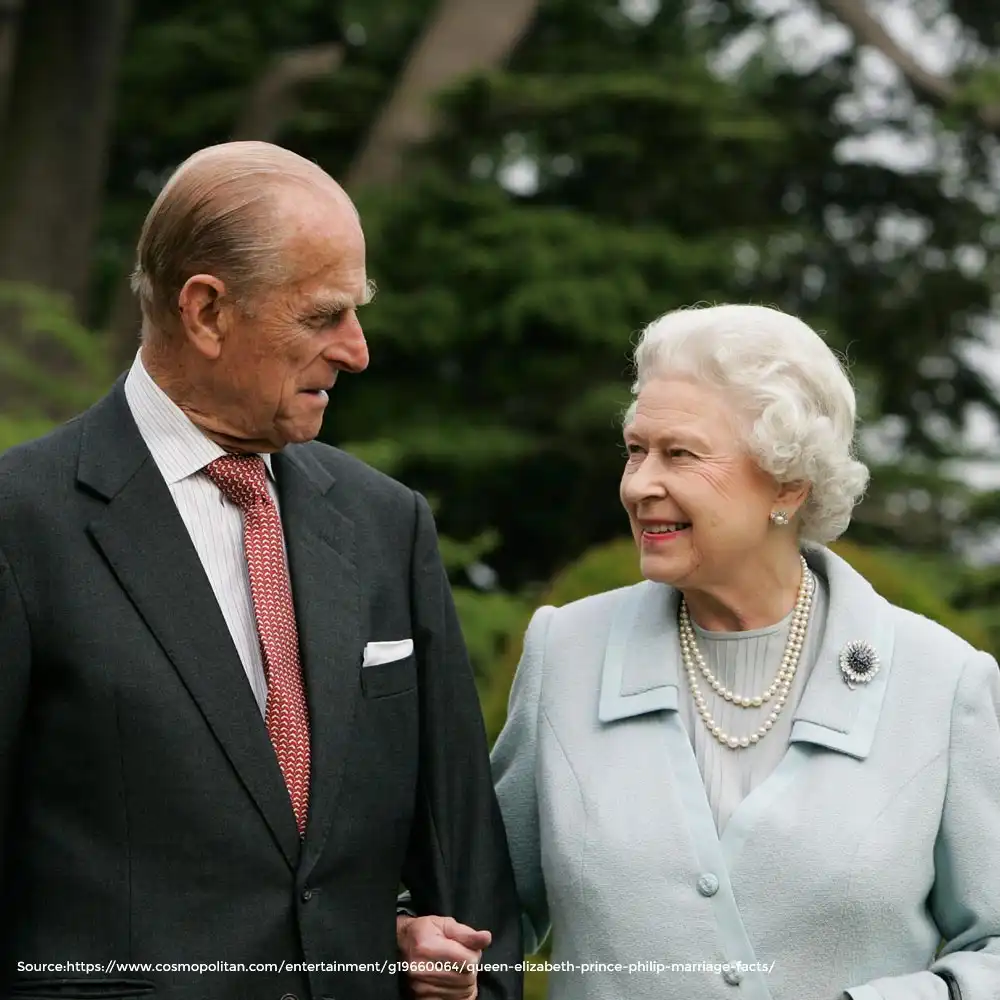Sleep Divorce: Insider to the Bedrooms of Celebrity Couples!

Have you ever heard of the term “sleep divorce”?
It sounds a bit dramatic, doesn’t it? But what if I told you it’s a common practice among many couples, including some of your favorite celebrities?
Amidst the glitz and glamour, do they share the same bed like any other couple, or is there more to their sleeping arrangements than meets the eye?
SmartMattressBuy.com is going to delve into the intriguing phenomenon known as “sleep divorce” and peek into the bedrooms of some of the most famous pairs in the spotlight.
Sleep Divorce. What it means?
Sleep divorce? What’s that, you ask?
Well, it’s not about ending a relationship but rather about sleeping in separate beds.
Yes, you read that right! Sleeping in separate beds, known as being ‘sleep divorced,’ isn’t necessarily a sign of relationship trouble. It’s often a strategic move to address sleep issues or conflicting schedules.
And guess what? It’s more common than you might think! But who are these celebrity couples opting for sleep divorce, and what are their reasons behind it?
Sleep Divorce Celebrities Unveiled
From power couples like David and Victoria Beckham to Hollywood stars like Cameron Diaz and Benji Madden, sleep divorce seems to be a trend even among the A-listers. Let’s take a closer look at some of these celebrity couples and their intriguing sleeping arrangements.
-
Victoria and David Beckham: Redefining Togetherness in Separate Beds
Did you know that Victoria and David Beckham have designated “his” and “her” wings in their lavish mansion? Reports suggest that their differing lifestyles led them to opt for separate beds on some nights. While it might raise eyebrows, it’s simply a way for the couple to ensure they get proper rest amidst their busy schedules.

-
Angelina Jolie and Brad Pitt: Separate Beds and the Unraveling of a Hollywood Romance
Even Hollywood’s golden couple, Angelina Jolie and Brad Pitt, reportedly slept in separate beds at times. While rumors swirled about their relationship, it’s essential to note that sleep divorce doesn’t always indicate trouble in paradise. Sometimes, it’s just about accommodating individual preferences and schedules.

-
Gwyneth Paltrow and Brad Falchuk: The Evolution of Intimacy
Gwyneth Paltrow and Brad Falchuk opted for separate beds early in their relationship, following the advice of an intimacy coach. However, as their relationship evolved, they eventually moved in together. Their story highlights how sleep divorce isn’t necessarily a permanent arrangement but can evolve over time.
-
Donald and Melania Trump: Navigating Separate Beds in the Spotlight
Even in the realm of politics, sleep divorce isn’t uncommon. According to reports, Donald and Melania Trump have separate sleeping arrangements. Given their demanding schedules, it’s a practical choice that allows each of them to get the rest they need.

-
Kevin and Danielle Jonas: Love, Laughter, and Snoring
In the world of celebrity marriages, Kevin and Danielle Jonas stand out not just for their musical talents but also for their candid approach to one of the most common issues faced by couples—snoring. While their love story may have all the trappings of a fairy tale romance, it also includes a humorous twist that sheds light on the realities of married life.
Kevin, one-third of the beloved Jonas Brothers, found himself facing an unexpected challenge in his marriage to Danielle—the dreaded snore. According to reports in In Touch Weekly, Kevin’s snoring was so disruptive that Danielle quickly decided to opt out of sharing a bed with her new husband.
Despite this seemingly mundane obstacle, Kevin and Danielle’s love for each other remained unwavering. Far from allowing the snoring to drive a wedge between them, the couple approached the situation with humor and affection. Their friends even joked about Kevin’s snoring, turning it into a lighthearted source of laughter and camaraderie.
-
Cameron Diaz: Redefining Love with Sleep Divorce
Cameron Diaz’s openness about her and her husband’s decision to sleep separately has sparked conversations about the concept of “sleep divorce” and its potential benefits. Diaz’s perspective on normalizing separate bedrooms aligns with the growing trend of couples choosing to sleep in different rooms to address various sleep-related issues.
The idea of sleep divorce, or sleeping separately from one’s partner, has gained traction as more people recognize the importance of quality sleep for overall well-being. Issues such as snoring, differing sleep schedules, and personal preferences for sleep conditions can often disrupt sleep when partners share a bed.
When one partner has a sleep disorder or significantly different sleep preferences, it can negatively impact the quality of sleep for both individuals. In such cases, sleeping separately can alleviate these disturbances and improve overall sleep quality.
According to the American Academy of Sleep Medicine, more than a third of Americans report sleeping in another room from their partner occasionally or consistently. However, sharing a bed can have its benefits, such as promoting feelings of intimacy and closeness through physical contact and the release of hormones like oxytocin.
Ultimately, whether to sleep separately or together depends on the individual needs and dynamics of each couple. Honest communication and an understanding of each other’s sleep patterns and preferences are crucial in determining what arrangement works best for maintaining a healthy relationship and quality sleep.

-
Queen Elizabeth II and Prince Philip: A Royal Tradition of Separate Beds
While it may seem disrespectful to refer to Queen Elizabeth II and Prince Philip as mere celebrities, their relationship offers a fascinating glimpse into a tradition that extends far beyond the realm of fame—the practice of sleeping in separate beds.
Throughout their illustrious marriage of 73 years, Queen Elizabeth II and Prince Philip maintained separate sleeping quarters, a choice that might raise eyebrows among modern couples but was perfectly normal for their generation, particularly among the upper class and royalty.
Despite their status as one of the most famous couples in the world, the Queen and Prince Philip adhered to a long-standing tradition of separate bedrooms, a practice deeply rooted in aristocratic culture. In an interview with Prince Philip’s cousin, Lady Pamela Hicks, she shed light on this tradition, explaining that having one’s own bedroom was customary among the upper echelons of the society.
Lady Hicks told royal biographer Sally Bedell Smith. “You don’t want to be bothered with snoring or someone flinging a leg around. Then when you are feeling cozy, you share your room sometimes. It is lovely to be able to choose.”
Their adherence to this tradition wasn’t a reflection of any discord in their relationship; rather, it was a practical arrangement that allowed each of them to have their own space and maintain their sleep independence. It was a nod to the importance of individual needs within the confines of a partnership—a concept that transcends societal status.

Sleep Divorce: More Than Just Celebrity Gossip
While the sleeping habits of celebrities might pique our curiosity, sleep divorce goes beyond mere gossip. It sheds light on the importance of prioritizing quality sleep for overall well-being. After all, sleep issues can significantly impact relationships, and finding a solution that works for both partners is crucial.
Sleep Divorce Statistics:
Surprisingly, a survey conducted by the American Academy of Sleep Medicine revealed that more than a third of Americans occasionally or consistently sleep in separate rooms from their partners. These statistics highlight the prevalence of sleep issues within relationships and the need for effective solutions.
Top Mattresses for Couples Considering a Sleep Divorce
While these mattresses may offer features that cater to specific sleep preferences or needs, it’s important to note that no single mattress is universally suitable for all individuals. When considering a mattress to accommodate shared sleeping arrangements or to alleviate issues associated with a sleep divorce, factors such as comfort, support, durability, and personal preference should be taken into account.
Here’s a brief overview of each mattress listed:
- Brooklyn Bedding – Best Hybrid Mattress: Hybrid mattresses typically combine the support of innerspring coils with the comfort of foam layers, offering a balance of support and cushioning.
- Helix Sleep – Best Mattress for Side Sleepers: Designed to provide targeted support for side sleepers, Helix mattresses often feature zoned support systems to relieve pressure points and promote proper spinal alignment.
- Isense – Best Mattress for Side Sleepers with Back Pain: Tailored to address the needs of side sleepers experiencing back pain, Isense mattresses may offer targeted support and pressure relief to alleviate discomfort.
- Molecule – Best Supportive Mattress: Molecule mattresses are engineered to provide optimal support and alignment, often incorporating advanced materials such as memory foam or latex for enhanced comfort.
- Nolah Mattress – Best Firm Mattress: Firm mattresses from Nolah may appeal to individuals who prefer a more supportive sleep surface, offering stability and spinal alignment.
- Plushbeds – Best Supportive Mattress: Plushbeds mattresses are designed to offer superior support and comfort, with options available for various sleep preferences and needs.
- Saatva – Best Value Mattress: Saatva mattresses are known for their high-quality construction and affordability, providing a balance of comfort and support at a competitive price point.
- Tempur-Pedic – Best Mattress for Heavy People: Tempur-Pedic mattresses often feature advanced materials like memory foam, providing contouring support and pressure relief for heavier individuals.
While these mattresses may be suitable for couples navigating a sleep divorce or looking for solutions to improve shared sleeping arrangements, it’s essential to consider individual preferences and consult with a healthcare professional if specific sleep-related issues persist. Additionally, many mattress brands offer trial periods or return policies, allowing couples to test the mattress and ensure it meets their needs before making a final decision.
Navigating Sleep Divorce:
For couples considering sleep divorce, it’s essential to rule out underlying sleep disorders and seek professional guidance if needed. Additionally, practical coping strategies such as adjusting sleep environments, addressing snoring, and maintaining emotional connection can help navigate this transition.
Navigating Sleep Issues in Relationships
Sleeping arrangements can deeply impact the quality of a relationship, and it’s crucial to address any underlying sleep issues to ensure the well-being of both partners. Here’s a comprehensive guide to navigating sleep problems in relationships:
-
Rule Out Underlying Sleep Disorders:
- Partners should be vigilant in identifying signs of sleep disorders and encourage seeking medical advice if necessary.
- Common disorders like sleep apnea, restless legs syndrome, and insomnia can have serious health consequences if left untreated.
- Consultation with a sleep specialist can help diagnose and treat underlying conditions, ensuring both partners’ future health.
-
Coping Strategies:
- Once serious health issues are ruled out, couples can explore practical coping strategies to improve sleep quality.
- Lifestyle adjustments, such as cutting out alcohol before bed and maintaining a consistent sleep schedule, can significantly impact sleep patterns.
- Elevating the head during sleep, using humidifiers, and employing earplugs or white noise machines can mitigate disruptive factors like snoring.
- Experimenting with sleep positions, such as sleeping on one’s side to alleviate snoring, can also be effective.
-
Social Support:
- Partners play a vital role in supporting each other’s sleep habits and encouraging healthy behaviors.
- Social control, where partners mutually reinforce positive habits, can motivate individuals to make beneficial lifestyle changes.
-
Consider Separate Sleeping Arrangements:
- If sleep troubles persist despite efforts to address them, couples may consider sleeping separately to prioritize individual sleep needs.
- Separate sleeping quarters can alleviate disruptions caused by snoring, differing schedules, or other sleep disturbances.
- Couples can maintain intimacy and connection by establishing pre-bedtime rituals and spending quality time together before retiring to separate rooms.
-
Nurturing the Relationship:
- Regardless of sleeping arrangements, couples can strengthen their relationship by prioritizing communication and connection.
- Sharing details of the day, expressing affection, and engaging in meaningful conversations before bed can foster intimacy and emotional closeness.
- Couples should view the bedroom as a sacred space for bonding and relaxation, even if they choose not to share a bed.
Addressing sleep issues in relationships requires open communication, mutual support, and a willingness to prioritize individual well-being. By working together to identify and address sleep disturbances, couples can foster a healthier and more fulfilling relationship, both inside and outside the bedroom.
Tips to Customizing Your Sleep Arrangements for a Better Relationship
Finding the right sleep arrangement for you and your partner can significantly impact the quality of your relationship and your individual well-being. Here are some key points to consider:
Tip1. Communication is Key:
- Open communication about your sleep needs and preferences is essential for maintaining a healthy relationship.
- Expressing gratitude and appreciation for your partner can deepen your connection and contribute to better sleep quality.
Tip 2. Flexibility in Sleep Arrangements:
- A “sleep divorce” doesn’t necessarily mean permanent separation. Couples can customize their sleep schedule to fit their unique needs.
- Experiment with different arrangements, such as sleeping separately during the workweek and sharing a bed on weekends, to find what works best for both partners.
Tip 3. Tailoring Your Approach:
- There is no one-size-fits-all solution when it comes to sleep arrangements. Couples should explore various options and adapt them to suit their individual preferences.
- Be open to trying different strategies, such as alternating nights in separate beds or establishing designated sleep spaces within the same room.
Tip 4. Prioritizing Relationship Health:
- Ultimately, the goal of adjusting sleep arrangements is to strengthen the relationship and promote overall well-being.
- Focus on nurturing emotional intimacy and connection outside of the bedroom, regardless of sleeping arrangements.
Tip 5. Seeking Professional Guidance:
- If sleep issues persist or become a source of tension in the relationship, consider seeking advice from a sleep specialist or couples therapist.
- Professional guidance can help identify underlying issues and develop effective strategies for improving sleep and relationship satisfaction.
Benefits of Sleep Divorce:
Celebs suggest that sleep divorce can have several benefits, especially when one partner’s sleep issues affect the other. Whether it’s snoring, differing sleep schedules, or other disturbances, sleeping separately can alleviate these issues and promote better rest for both individuals. Here’s a brief Benefits mentioned:
Benefits:
- Reduced sleep interruptions: Sleeping separately can help minimize disturbances caused by differing sleep schedules, snoring, movements, or other sleep-related behaviors.
- Improved sleep quality: Many individuals report better sleep quality when sleeping alone, as they avoid disruptions from their bed partner.
- Increased time asleep: Those who opt for a sleep divorce often sleep longer, with an average increase of 37 minutes per night.
- Improved relationship: Better sleep can lead to improved relationship dynamics, as sleep deprivation is associated with increased hostility and lower relationship quality.
- Safety: Sleeping alone may be safer in cases where one partner experiences dream-enactment behaviors that could result in injury.
Let’s delve into the comprehensive cons of a sleep divorce.
Cons:
- Increased cost: Maintaining separate sleeping spaces requires additional resources, such as an extra bedroom and bed.
- Reduced intimacy: Sleeping apart may lead to feelings of loneliness and a decline in physical intimacy, impacting the couple’s sex life.
- Worsened sleep quality: While some experience better sleep alone, others find that sleeping together improves sleep quality. Additionally, reuniting after a sleep divorce may lead to improved sleep for some individuals.
- Security: Some people may feel less secure sleeping alone, leading to heightened vigilance and potentially exacerbating insomnia.
Ultimately, whether a sleep divorce is beneficial depends on the unique circumstances and preferences of each couple. Partners need to communicate openly and consider both the advantages and disadvantages before making a decision.
Alternative Arrangement to a Sleep Divorce
When considering a sleep divorce, it’s important to weigh the potential benefits against the risks associated with sleep deprivation. If you find that sleeping with your partner is significantly impacting your sleep quality, it may be time to discuss alternative arrangements. However, before jumping into a sleep divorce, there are several alternatives worth exploring:
- Screening for sleep apnea: If snoring is a primary concern, it’s essential to consider whether sleep apnea might be the underlying issue. Symptoms such as loud snoring, gasping for air during sleep, daytime fatigue, and irritability could indicate sleep apnea. Seeking medical evaluation and treatment for sleep apnea may alleviate the need for a sleep divorce.
- Changing sleep schedules: If differing sleep schedules are causing disturbances, attempting to synchronize sleep patterns may be beneficial. Adjusting bedtime routines or making compromises to accommodate each other’s sleep preferences could help maintain shared sleeping arrangements.
- Using sleep-promoting tools: Utilizing tools such as eye masks or earplugs can help minimize disruptions caused by a sleep partner. These accessories can block out light and sound, creating a more conducive sleep environment without the need for separate sleeping spaces.
- Sleep Scandinavian style: Adopting the Scandinavian approach to sleeping involves sharing a bed while using separate bedding. This allows each partner to customize their sleeping environment according to personal preferences, such as bedding thickness and warmth, while still sharing the same bed.
Exploring these alternatives before resorting to a sleep divorce allows couples to address sleep-related issues while maintaining shared sleeping arrangements. However, if these strategies prove ineffective or if sleep disturbances persist, discussing the possibility of a sleep divorce may be necessary for improving overall sleep quality and relationship dynamics.
Final Takeaway!
In the intriguing world of celebrity relationships, even the sanctity of the bedroom isn’t immune to unique arrangements. As we’ve delved into the concept of “sleep divorce” among celebrity couples, it’s clear that they, too, grapple. With the same age-old dilemma of balancing intimacy with the pursuit of quality sleep. From Cameron Diaz and Benji Madden’s separate sleeping quarters to other famous pairs who’ve navigated similar paths. It’s evident that individualized sleep solutions are as diverse as the stars themselves.
If you’re curious about enhancing your own sleep setup or exploring mattress options tailored to your specific needs, head over to SmartMattressBuy.com. With a wide range of top-notch mattresses catering to various preferences and budgets, you’re sure to find the perfect fit for your bedroom oasis. Say goodbye to sleepless nights and hello to restful slumber with Smart Mattress Buy – because a good night’s sleep knows no celebrity status. Visit SmartMattressBuy.com. now and transform your bedroom into a haven of comfort and tranquility!
FAQs on Sleep Divorce!
Q1. Is it common for couples to sleep in different beds?
- It’s quite normal for couples to occasionally sleep apart, such as when one partner is away, feeling unwell, or prefers a different sleeping spot like the couch.
Q2. What percentage of married couples sleep separately?
- Estimates suggest that anywhere from 25 to 40 percent of married couples have separate sleeping arrangements. However, due to the stigma surrounding this practice, the true number might remain uncertain.
Q3. Is it beneficial for married couples to sleep in separate beds?
- Despite the stigma, experts highlight numerous advantages to improved sleep when individuals sleep alone. A 2017 study from The Ohio State University even found that quality sleep enhanced communication and reduced irritability between couples.
Other Celebrity Articles!
- Celebs Open Up About Schizophrenia And Sleep Deprivation!
- Ultimate Relaxation In A Celebrity Bedroom With Natural Latex Mattress!
- Celebrity Obsession On Tempur-Pedic Mattresses Revealed!
- Popular but Tired Lifestyles Of Celebrities With Sleep Problems!
